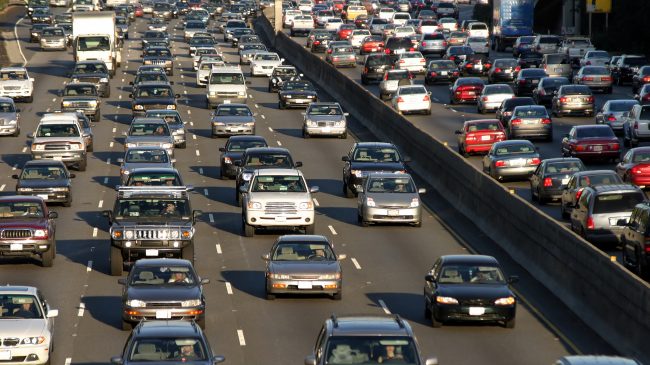President Donald Trump released his long-awaited infrastructure plan last month, which calls for $200 billion in federal spending and hopes to encourage over $1.5 trillion in new infrastructure investments through the use of public-private partnerships and incentives.
Critics correctly point out that Trump’s plan doesn’t actually indicate where that $200 billion in spending will come from, though he reportedly floated raising the gas tax by 25 cents a gallon in recent meetings with lawmakers. Raising the gas tax, however, has limited support in Congress, so it is likely that the funding will have to come from somewhere else.
If the plan moves ahead and major parts of the Trump administration’s plan are passed into law, it will shift a lot of the burden for funding infrastructure onto state and local governments, where it should be. For California, this shift could be a burden and a blessing.
The good news: California’s urban areas, particularly Southern California, need many of the types of mega-projects that private companies would gladly finance, build, and operate. For example, added capacity on I-5, an extension of the SR-91 HOT lanes, and the construction of the I-710 tunnel would all be prime candidates to be built via the types of public-private partnerships the Trump administration is counting on to boost the total spending figures to over $1 trillion.
The bad news: California has struggled to prioritize infrastructure projects and inefficiently spends its transportation dollars, which could get worse if the state gets fewer federal dollars in the years ahead. Consider that California ranks 42nd in the nation in road conditions and cost-effectiveness in the latest edition of the Annual Highway Report published by Reason Foundation last month.
The report finds California has a relatively low fatality rate on its highways, ranking 14th best in the nation. And the state ranks in the middle of the pack when it comes to deficient bridges, ranking 28th out of 50 states, and 33rd in the condition of rural Interstate pavement.
But beyond that, the state’s results are poor. The legendary Southern California traffic jams, along with similar bottlenecks in the Bay Area, help give the state the second worst urban traffic congestion in the country. Only New Jersey’s gridlock is worse. The state’s urban interstate pavement is bumpy and pothole-riddled enough to rank 46th out of 50 states.
The traffic congestion and pavement conditions are more worrisome when you consider how much the state spends on its state highway system. California spends $84,000 on maintenance for every mile of state-controlled highway and yet still ranks 46th in urban Interstate pavement condition. It’s administrative costs for the state highway system also rank 46th – meaning only four states spend more per mile than California on office and other organizational costs. In total disbursements for its state-controlled highways, California spent $471,000 per mile in 2015, ranking 43rd.
Given how large California is, ranking 43rd in spending might not seem too bad. But the spending is per mile. California should have efficiencies of scale since it has the 15th largest state-controlled highway system in the country. Yet states with much smaller systems like Arizona and Oregon are much more efficient.
Those performance metrics could get even worse if California doesn’t improve the way it prioritizes projects and spends transportation dollars and the Trump administration’s blueprint becomes law. The Trump plan says local and regional transportation projects should be funded primarily by state and local governments – with the federal government only providing up to 20 percent of the funding for a project, which means a much larger share of the funding for those projects will need to come from a state that struggles with efficiency. Thus, California will need to seriously dedicate itself to maximizing taxpayers’ dollars and prioritizing transportation projects that will improve mobility for the greatest number of citizens possible.
This column originally ran in The Orange County Register.

